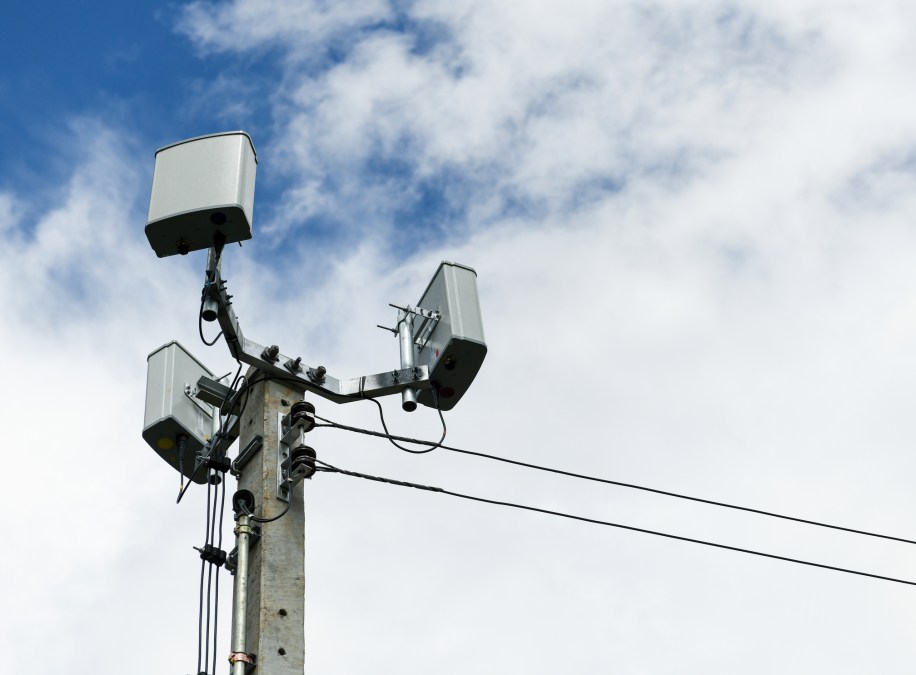Pentagon opens bids on 5G prototypes at military bases

The Department of Defense has issued a call for prototypes to test 5G use cases at a handful of military bases around the U.S.
In recent weeks, the department issued a series of requests for prototype proposals to the National Spectrum Consortium to support the military’s experiments with 5G-related technologies. Under the first three solicitations released so far, work will take place at Marine Corps Logistics Base Albany, Georgia; Joint Base Lewis-McChord in Washington; and U.S. Naval Base San Diego.
The three requests for proposals are split among different 5G use cases, each with separate awards to support the pilot project’s needs for testbeds, network enhancements and applications.
The bases in Georgia and San Diego are building “smart warehouse and asset management” prototypes.
Per the solicitations: “These 5G enabled smart warehouse technologies should improve the efficiency, accuracy, security, and safety of materiel and supply handling, management, storage, and distribution. Specifically, this project will leverage 5G networking in a warehouse test environment to identify, test and confirm 5G enabled warehouse and logistics improvements that increase the efficiency and safety of warehouse operations. The intended outcome of this project is a 5G-enabled Smart Warehouse that can not only improve the efficiency and safety of current processes, but also serve as a proving ground for testing, refining, and validating emerging 5G enabled technologies.”
Joint Base Lewis-McChord in Washington, on the other hand, is developing an augmented reality/virtual reality prototype to “to demonstrate how 5G communications technologies can support realistic distributed training and develop deployable equipment and systems to integrate these technologies into ongoing training operations.”
DOD is also working on another pilot at Hill Air Force Base in Utah for 5G dynamic spectrum sharing. The call for prototypes for that is expected soon.
Bidding on these projects is open to only members of the National Spectrum Consortium in good standing through an other transaction agreement (OTA) the DOD has already awarded to the consortium. DOD says in the solicitation that NSC is an “open consortium with a low barrier for membership,” so any private organizations can join to compete for the contracts.
The consortium includes major telecommunications companies and government contractors, academic and nonprofit organizations and smaller companies.
The bidding period for each project ends in late April.
The prototypes developed in partnership between the military and the consortium’s members “will help ensure that the US continues to have the technical edge on the battlefield. We strongly encourage our members to collaborate and respond to these important [solicitations] to supports innovation and make sure that the United States remains a global technology leader on 5G,” said Joseph Dyer, chief strategy officer of the National Spectrum Consortium.
The base testbeds are meant to be as much about development for the military as they are for the commercial sector. Deputy Undersecretary of Defense for Research and Engineering Lisa Porter told reporters last fall that “the uses cases we’re looking at have obvious military and commercial relevance.”
“5G is really ultimately about ubiquitous connectivity,” Porter said. “It’s not just cellphones and cat videos. It’s really everything getting connected to everything else … there’s a lot we don’t know as things are going to emerge. But one thing we can confidently say is there’s going to be a lot of complexity. And with complexity comes much greater attack surfaces, much more vulnerability — we have to understand those, and as we work through use cases that are relevant to us and relevant to the commercial sector, what we hope we can do together is understand how we mitigate those vulnerabilities and get out ahead of that.”






